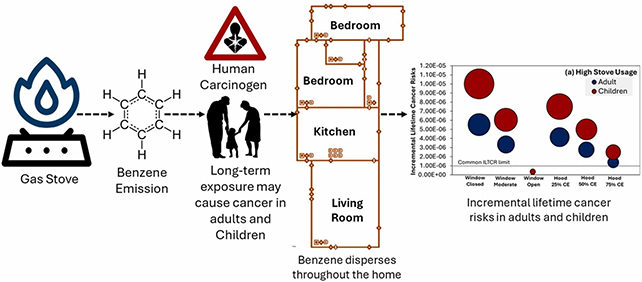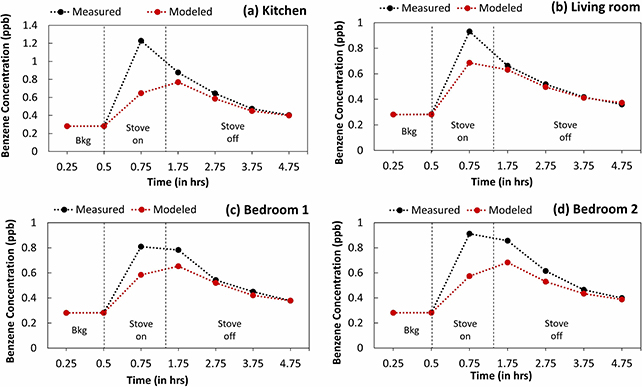The gas stove in your home could be releasing toxic chemicals at cancer-causing levels, a new study shows. The study focuses on benzene, which is produced from the burning of natural gas or propane, and is already known to increase cancer risk.
Researchers led by a team from Stanford University measured benzene emission rates from gas stoves in 87 homes, as well as analyzing the movements of the gas in a smaller number of locations, and running computer models of how benzene might spread.
For homes with stoves that emit the most benzene and have the least ventilation, benzene-caused cancer risks are "significantly elevated", the data showed – especially for children, where the lifetime risk rose 1.85 times higher than it did for adults.

"Natural gas and propane stoves emit benzene, a known carcinogen through combustion," write the researchers in their published paper. "This study evaluates population-level benzene exposure and associated health risks for the 6.3 million U.S. residents exposed to the top 5 percent highest benzene-emitting gas stoves."
The study produced numerous data points. Cancer risks were greater for apartments and smaller homes, as you might expect, while benzene often spread far enough to reach bedrooms – further increasing the danger, as that's where we spend much of our time.
As per the World Health Organization (WHO), an acceptable cancer risk for exposure is seen as one in a million: so if a million people are given that level of exposure, a single person might be expected to develop cancer because of it.
This analysis showed that for the bedroom exposure from the worst benzene-emitting gas stoves, the lifetime cancer risk was 1.92-12.03 in a million for kids, and 0.94-5.89 in a million for adults – far over WHO's recommended levels.

It's important to note that these are worst-case scenarios – the highest benzene emissions and the lowest levels of ventilation – but they highlight the potential dangers, especially for children, who have lower body weights and faster breathing rates.
"These values may vary depending on home size, weather circumstances, the usage of a hood, ventilation in the home, and other housing factors, the frequency and duration of using ovens and burners, and vary from person to person metabolic and other physiological characteristics," write the researchers.
That is the good news from this study. Increasing ventilation (even just opening a window) and reducing how often gas stoves are used makes a big difference, and that's something the researchers are keen to raise awareness of.
The researchers also put their findings into some useful context: in the US, people spend an average of 90 percent of their time indoors, and with that figure rising with more of us working from home, further indoor air pollution studies are needed.
"The study underscores the importance of addressing combustion-related indoor air pollutants to protect public health, particularly in households with limited ventilation," write the researchers.
The research has been published in the Journal of Hazardous Materials.
